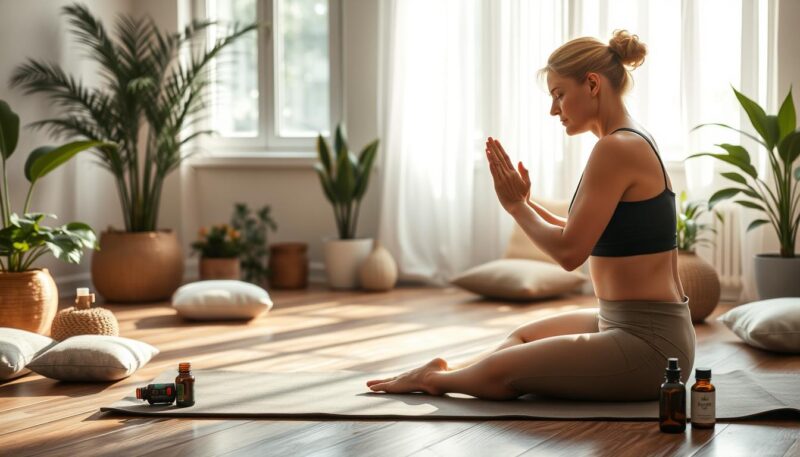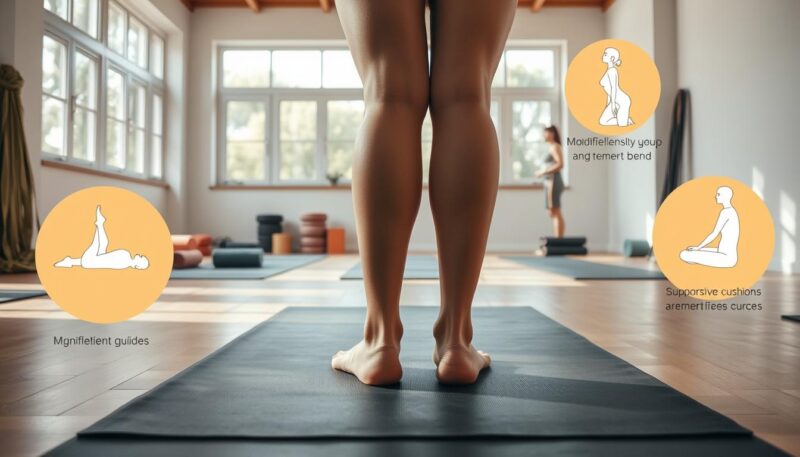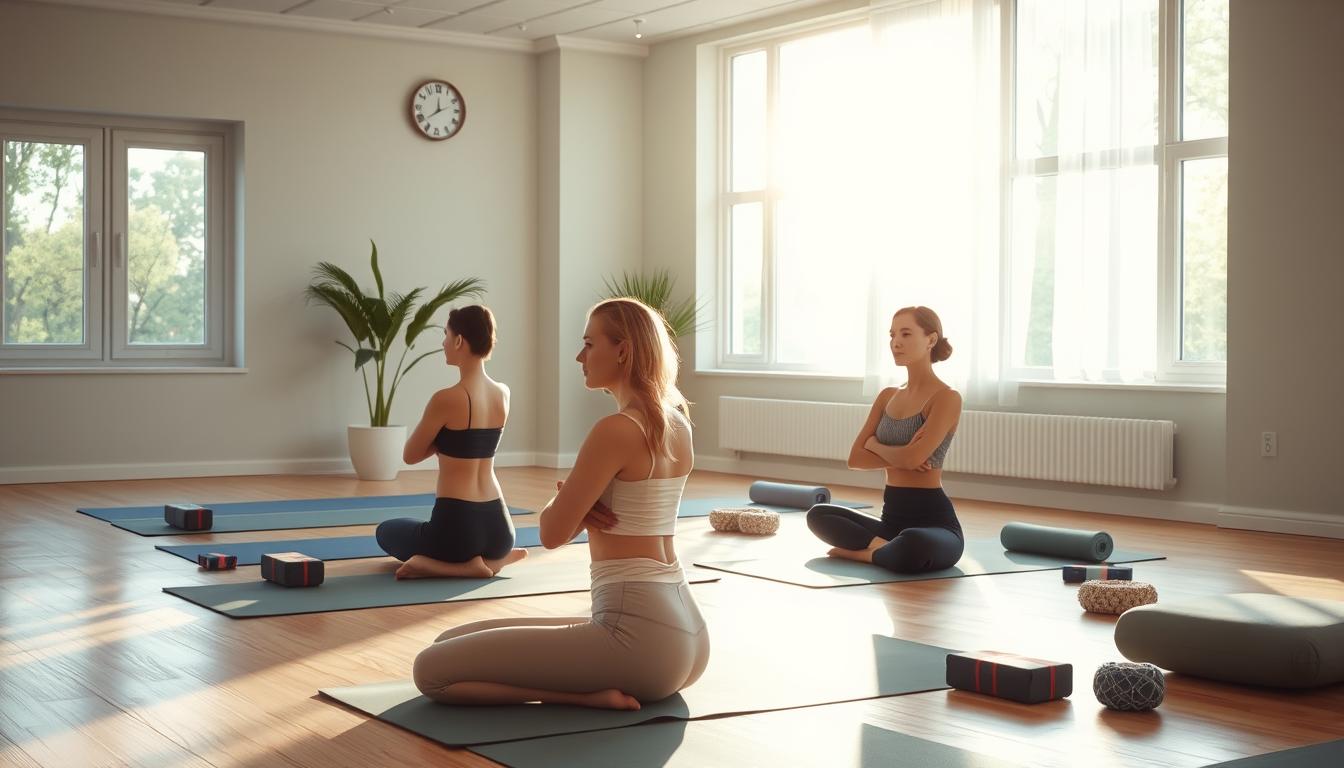Many individuals struggle with knee pain, whether it stems from injuries, aging, or conditions like osteoarthritis. Fortunately, yoga has emerged as a potent remedy for knee discomfort, acting as a valuable practice to alleviate pain, enhance mobility, and strengthen the muscles surrounding this crucial joint. Through gentle movements and therapeutic yoga, you can cultivate a deeper connection with your body while nurturing your knees. Recent studies indicate that individuals diagnosed with knee osteoarthritis have experienced remarkable improvements in their ability to rise from a sitting position, flexibility, and strength after engaging in tailored yoga therapies.
Many experts recommend certain styles of yoga, such as Hatha, Iyengar, restorative, and Yin, for those dealing with knee pain. These methods focus on joint-friendly yoga and gentle poses for knees that prioritize safety while providing relief from discomfort. In this article, we will explore effective knee relief poses and offer guidance on how to practice safely and joyously. With the right approach, yoga not only promotes physical healing but also encourages mental resilience, allowing you to regain control over your mobility and enjoy a more active life.
Understanding Knee Pain and Its Effects on Mobility
Knee pain can be a complex issue that arises from various factors affecting your daily activities and overall quality of life. Understanding the knee pain causes can illuminate the deeper issues that may be at home in your body. This comprehension is crucial in implementing effective injury prevention measures and optimizing yoga for mobility to enhance your physical well-being.
Why Knee Pain Occurs
There are multiple reasons why knee pain develops. Injuries, undue stress, and degenerative conditions like arthritis contribute significantly. The knee houses four major ligaments: the anterior cruciate ligament (ACL), the posterior cruciate ligament (PCL), the medial collateral ligament (MCL), and the lateral collateral ligament (LCL). Each plays a vital role in maintaining knee stability. The meniscus, which acts as a shock absorber, is also essential for proper knee function. Understanding knee pain causes, such as hyperextension and anatomical variability, can aid in recognizing your body’s unique needs.
Impact of Knee Pain on Your Daily Life
The effects of knee pain on mobility can drastically alter your everyday experiences. Simple tasks—like walking, running, or climbing stairs—can become formidable challenges when knee discomfort is present. Joint pain may lead to reduced physical activity and increased reliance on others for support. This loss of independence not only impacts your physical health but can also take a toll on your mental well-being. Incorporating yoga for mobility can serve as a powerful tool to diminish discomfort while fostering strength and flexibility in your knees, enabling you to reclaim your everyday activities.
| Knee Pain Causes | Effects on Mobility |
|---|---|
| Injury (e.g., ligament tears) | Difficulty in bending or straightening the knee |
| Arthritis | Reduced range of motion, stiffness |
| Overuse | Fatigue during physical activities |
| Hypermobility | Instability leading to further injuries |
| Anatomical Variability | Inconsistent mobility levels |
Recognizing and understanding these details will empower you to take proactive steps in managing your knee health. By prioritizing practices that promote injury prevention and enhance mobility, you can lead a more fulfilling and active life.
Yoga for Knee Pain – Effective Poses to Relieve Discomfort
Knee pain can significantly hinder your daily activities, causing discomfort and limitations in mobility. Fortunately, therapeutic yoga offers effective solutions for relief. You can find great benefits in gentle yoga poses, which focus on stretching, strengthening, and enhancing flexibility without straining the joints. Incorporating specific yoga for knee pain not only alleviates discomfort but also promotes overall knee health.
Gentle Poses for Knees
Engaging in gentle yoga poses can greatly impact your knee well-being. These poses help improve flexibility in the muscles and joints surrounding the knee, ultimately reducing stiffness and pain. Here are some effective gentle yoga poses:
- Child’s Pose
- Supported Bridge Pose
- Standing Forward Bend
- Triangle Pose
- Chair Pose
Knee Relief Poses to Strengthen Muscles
Building strength in the muscles that support the knee is crucial for stability and injury prevention. Knee strengthening yoga focuses on engaging various muscle groups, including the hamstrings, quadriceps, abductors, adductors, and calves. Consider including the following poses in your practice to efficiently strengthen these areas:
- Warrior II
- Half Moon Pose
- Goddess Pose
Recommended Therapeutic Yoga Practices
Incorporating a range of therapeutic yoga practices can provide a comprehensive approach to managing knee pain. It’s beneficial to practice regularly while listening to your body and maintaining an open dialogue with your yoga instructor about your knee condition. Using props, such as blankets for knee padding, can enhance your experience and enable you to modify poses as needed. Seeking advice from a physical therapist for pose variations tailored to your needs may also be worthwhile.

Following these practices can significantly improve your knee health and include gentle movements, which encourage blood circulation. Delivering essential nutrients to your knee joint can facilitate healing and decrease inflammation. Combining these therapeutic yoga techniques with other treatments like physical therapy, acupuncture, or medication offers a holistic approach to knee pain management.
| Pose | Type | Benefit |
|---|---|---|
| Child’s Pose | Gentle Yoga | Relaxes the knee and stretches the hips |
| Supported Bridge Pose | Gentle Yoga | Strengthens the glutes and hamstrings |
| Warrior II | Knee Strengthening Yoga | Builds stability and strength |
| Half Moon Pose | Knee Strengthening Yoga | Enhances balance and coordination |
| Chair Pose | Gentle Yoga | Promotes strength in the legs and core |
Precautions and Tips for Safe Practice
Practicing yoga can provide relief for knee pain, but it is crucial to adopt necessary precautions for a safe yoga practice. Following essential alignment tips will enhance your ability to enjoy yoga while protecting your knees. Incorporating knee-friendly asanas into your routine can help you avoid exacerbating any discomfort. Understanding the poses to avoid is equally vital to ensure your practice remains beneficial.
Essential Alignment Tips for Knee-Friendly Asanas
Proper alignment forms the foundation of safe yoga practice. Pay attention to the following key points:
- Keep your knee aligned over your ankle in standing poses to prevent undue stress.
- Engage your core to stabilize your pelvis and knee regions.
- Use props, such as blocks or cushions, to support your body and maintain correct alignment.
- Focus on slower transitions between poses to enhance control and awareness.
Emphasizing these yoga safety tips will enable you to perform knee-friendly asanas effectively while minimizing the risk of injury.
Common Poses to Avoid with Knee Pain
Certain yoga poses can place excessive strain on the knees, resulting in pain and discomfort. Be mindful to avoid the following:
- Camel Pose
- Triangle Pose
- Pigeon Pose
When unsure about a particular asana, consult a qualified yoga instructor for modifications that cater to your condition. By adhering to these guidelines, you can enjoy a safe yoga practice that alleviates knee pain and enhances your overall wellness.

Conclusion
Incorporating yoga into your routine can lead to significant improvements in knee health, relief from discomfort, and enhanced mobility. As evidenced by various studies, including those that have shown marked reductions in pain and improvements in daily activities, engaging in yoga for knee pain can be a transformative approach. The therapeutic benefits of yoga not only focus on strengthening the knees through specific exercises but also promote overall well-being through mindful practice.
When you emphasize joint-friendly poses and maintain proper alignment, you can effectively manage knee discomfort. This mindful practice encourages mobility improvement and empowers you to remain active in daily life. Remember, the journey to better knee strength is unique to each individual, and exploring various yoga methods, such as Hatha or Iyengar, can help tailor your experience to meet your personal needs.
Ultimately, embracing yoga fosters resilience against potential injuries and enhances your quality of life. By committing to this holistic approach, you are not only improving your physical state but also nurturing a deeper connection to your body and its capabilities. As you continue on this path, you’ll find that the benefits of yoga extend far beyond the mat, enriching your life with each mindful breath.

